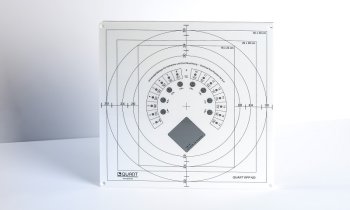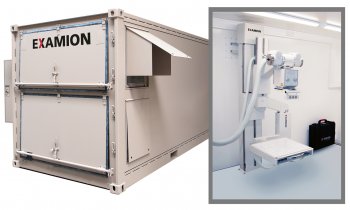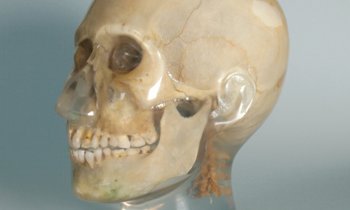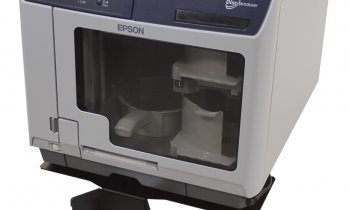Confident and quick diagnoses - The Samsung DR GF50
In many practices and hospitals the X-ray systems need to be modernised. Increasingly, physicians opt for digital radiography (DR) systems, as did Dr Joachim Münch and Dr Dennis Völker who run an orthopaedic and surgical practice in Winsen an der Luhe, Germany.
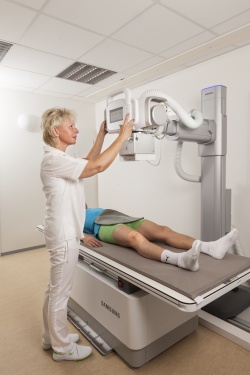
Early in 2014 they installed the Samsung DR GF50 radiography system to replace their analogous and CR system. More accurate, more flexible, more efficient – three convincing arguments for the GF50 as both physicians agree. ‘In our practice we need patients to move into the system and out of it quickly and without a big fuss,’ explains Dr Münch and adds that ‘the GF50 has significantly increased the process speed compared to our old systems. We reduced time and costs by almost 40 percent.’
More than 200 patients present every day in the two doctors’ office which is located in the community health centre in Winsen, and 60 of those have to be X-rayed. Thus, efficiency is crucial, as Dr Völker reports: ‘We were able to optimise our workflows. With the old systems, generating an X-ray image took much longer and now the team has much more time to deal with the patients rather than with the technology.’
Shorter waiting times and lower radiation dose
The patients appreciate the new X-ray technology. ‘We see patients by appointment only and we have pretty long waiting lists. Therefore we want to make the patients’ stay in our practice as agreeable as possible. That includes short waiting times in the X-ray area,’ says Dr Völker.
The reactions to the GF50 were very positive, the physician underlines: ‘Particularly younger patients comment on the design of the system and on the quick procedures. They are interested and want to know more about the advantages of digital radiography.’
A major advantages no doubt is the low dose. ‘One particularly crucial competence of a physician is to alleviate a patient’s fear. For example, parents often ask whether it is really necessary to X-ray their child. They are especially concerned about radiation exposure.
‘With the GF50 we can demonstrate that we use state-of-the-art technology and that we apply low dose,’ Dr Münch explains.
On the previous system the dose area product was displayed on a separate add-on device and the data were not automatically transferred to the PACS (Picture Archiving and Communication System). Whether an image was overexposed or underexposed was something the physician could only see after the image had been acquired. Modern systems, such as the GF50, are fully integrated which means that all dose-relevant data are automatically stored. Dr Münch adds: ‘The Samsung system immediately displays the values. Thus we can immediately react if the imaging parameters are not ideal. Consequently, the number of re-takes has decreased dramatically – almost to zero, I would say.’
Early disease detection
More importantly – the fully digital radiography system enables much more precise diagnoses. Both physicians emphasize the superior image quality. Moreover the new system has many more post-processing functions than the previous model, a crucial precondition for diagnostic precision and confidence.
‘Both my colleague and myself, we see many rather young patients who are athletes and complain about knee problems,’ says Dr Völker. ‘One example is osteochondritis dissecans, a disorder of the cartilage and bone area on the inside of the knee caused by blood deprivation.
‘With our previous conventional X-ray systems we had very limited capabilities to detect early stages of the disorder. With the new and fully digital technology we can zoom in on the region, select specific areas and work with exposure, resolution and depth.’
Degenerative disorders can also be visualised early on thanks to the image quality and the post-processing capabilities of the XGEO GF50 – and early detection means early therapy. When structural changes or damages to the bone are detected early, sequelae and surgical interventions can be delayed or even entirely avoided.
‘In a very busy orthopaedic practice diagnostic accuracy and fast decisions are crucial, and this is exactly where the Samsung system is particularly helpful,’ says Dr Völker, summing up his experience with this particular equipment.
Support in the planning phase
It is not only the system performance that convinced Dr Münch and Dr Völker: they are both very impressed with the support Samsung offered in the planning phase. Dr Münch: ‘We had developed requirement specifications and looked at several devices by different manufacturers. What really won us over was not only the excellent price/performance ratio of the GF50, but also the fact that the Samsung team was prepared to accommodate our needs regarding the installation and time frame.’
In view of the patient flow at their practice, for Drs Münch and Völker it was of utmost importance that down time or limited availability of the premises be kept at an absolute minimum. Be it flexible scheduling, smooth deinstallation of the old systems and installation of the new and even inspection by the German authorities – Samsung met all the requirements of the physicians. It took a mere three days for the XGEO GF50 to be fully operational with the practice running as usual. Due to the intuitive operating concept of the new system, the staff was able to familiarise themselves quickly with the XGEO GF50.
‘To my big surprise – after all I have been in this business for a long time – the system ran from day one without a hitch,’ Dr Münch happily reports. ‘Obviously many details will only show up when we work with the system on a daily basis. Thus, a few presets had to be changed for our specific purposes, but Samsung always responded really quickly and sent over technical staff to implement our requested changes and to fine-tune the XGEO GF50.’
10.11.2014






